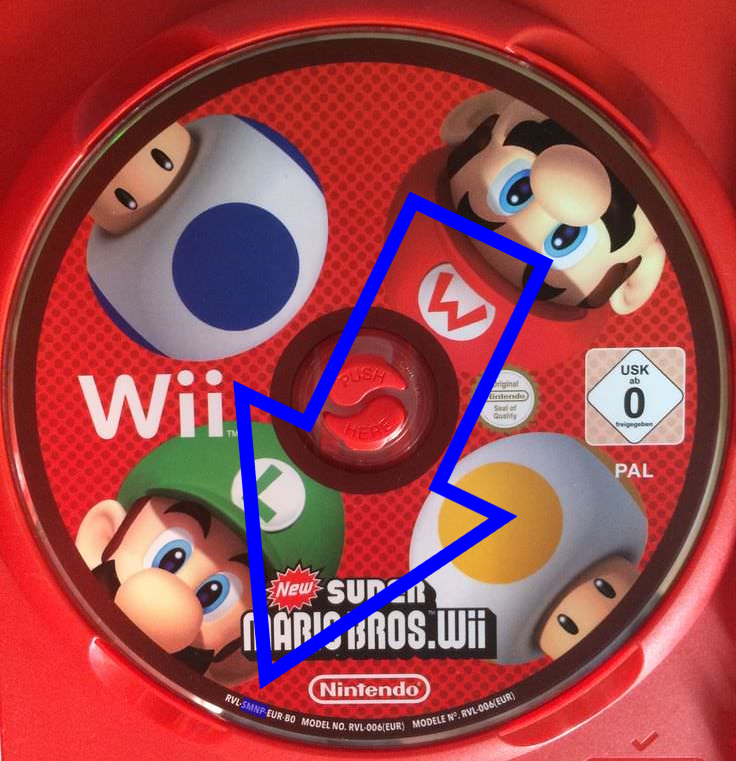
The three-letter prefix for each of these codes refers to the in-house codename of each console (Dolphin, Revolution, and Wii U Project, respectively), while the index number "006" indicates that it is an optical disc.

Each format of disc has its own serial code: GameCube discs are labelled "DOL-006", Wii discs are labelled "RVL-006", and Wii U discs are labelled "WUP-006". Nintendo optical discs also feature a burst-cutting area, a barcode imprinted on the inner ring of the disc as a form of anti-piracy. Like most optical discs, Nintendo's are circular, with one side being labeled and the other being exposed so that it can be read by a laser. Unlike competing consoles, which use industry-standard formats, Nintendo optical discs are proprietary, as industry standards are copyrighted and consequently require licensing fees for each sold product that utilizes them, and proprietary formats are more resistant to piracy. In previous years, Nintendo stored its games on Game Paks as did their competitors, but after the success of the Sony PlayStation over the Nintendo 64 demonstrated the technological superiority of optical discs over ROM cartridges, Nintendo decided to switch to optical discs.

Nintendo uses a series of proprietary formats of optical discs created by Panasonic. Optical Discs refer to the medium for game storage on the Nintendo GameCube, Wii, and Wii U.


 0 kommentar(er)
0 kommentar(er)
